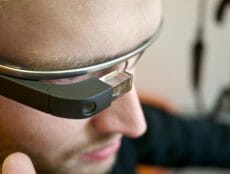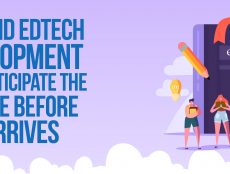
Education Technology
Op-Ed
The Acceleration of Remote-Based Learning
By Kevin Stringfellow
February 08, 2022
With more than 1.3 billion students impacted worldwide by the COVID-19 pandemic, the adoption of remote learning skyrocketed as schools, universities, and organizations turned to remote-based learning technologies out of sheer necessity. But even as many institutions start embracing a more in-person teaching and learning experience again, we should not expect the growth of remote-based learning to slow anytime soon.
Remote learning offers numerous advantages that traditional education does not. For example, it allows K–12 parents the ability to be more involved in their education, more immediately; for the college and adult learners, some much-needed flexibility. Remote-based learning also allows students to take advantage of a teacher’s experience and training without the need to be physically present in a classroom. For educators, this means enablement to deliver more course material options and assessments that better suit the learning styles of individual students.
Like any fundamental shift away from traditional, remote-based learning is not without its challenges. One of the most pressing issues facing the remote-based learning industry is the lack of access to the equipment and technology often necessary. Another is that adapting learning materials to be delivered through remote means requires deliberate thought and must consider the simple fact that some students learn better in a more structured environment and may struggle when using a remote-based learning platform.
Challenges aside, industry growth continues to accelerate. Inside Higher Ed reported that In 2019, there were 3 million students enrolled in online classes. The arrival of the pandemic increased that number by nearly 93%, with more than 5.8 million students enrolled in remote-learning classes in 2020. Even after the pandemic finally abates, these numbers are not likely to revert, with almost 60% of institutions planning to continue remote learning classes initially offered to deal with the health crisis.
What’s driving the acceleration?
Remote-based learning is nothing new, and it was experiencing steady growth long before the pandemic struck. This was mainly due to a philosophy shift in the last few years about how online or remote learning should be approached. In some cases, it was simply a budgetary issue, with online learning being a less expensive option. But over time, educators realized remote learning was the perfect fit for the adult learner or busy professional who desires to further their education but is unable to dedicate the time or resources needed to complete courses in person.
It was at this moment where the view of online learning began to change; though there is some stigma in which remote learning is viewed as a second-rate option rather than an equal alternative to classroom education. As more schools became familiar with and experienced using remote-based learning platforms, they have also become more comfortable offering these options to their students. In turn, both students and faculty have found them an equivalent and viable option to in-person learning and, in some cases, an even better option.
When the events of 2020 brought the near-complete lockdown of schools worldwide, remote learning became not only the best option but—for more than a year—the only option available to students, helping to push this acceleration into high gear.
What’s new and exciting in remote-based learning?
Remote-based learning began by leveraging online platforms like learning management systems or even email or chat, providing early users with the educational information they could absorb at their own pace. But as technology advanced, so did the capabilities of remote-based learning infrastructure, creating a more equitable learning platform for students and teachers alike.
With today’s remote-based learning infrastructure, the learning experience is no longer one-sided but collaborative. For example, tools such as online conferencing/meeting platforms were once used for basic communication, but now they’re being used to create real-time collaboration between instructors and their students. Using today’s remote-based learning platforms, students can participate in classes alongside their peers, ask questions, and even complete assignments. This technology also allows for breakout rooms for study groups and the ability to share documents interactively, providing a community option for learning collaboration.
Another important addition to remote-based learning is the availability of online assessments, remote proctoring, and more advanced identity verification. While many such options are not new, they are only now being fully understood and used to meet the needs and demands of remote learners.
How do changes in remote-based learning benefit students and teachers alike?
One of the biggest changes in remote-based learning is the ability to share information immediately. Only a few years ago, students would have to wait to receive lesson plans and educational materials, but today’s students can access course materials quickly and easily, whenever they like.
Today’s remote-based learning is also allowing educators to offer materials that are more adaptive to student needs and learning styles. For example, they can now offer images and pictures for visual learners, discussion boards for those who learn better in groups, and quizzes and other interactive activities that appeal to various learning styles. Teachers also enjoy the flexibility that remote learning provides, enabling them to better connect with their students while offering flexibility in their schedule and in their teaching practice.
Both challenges and opportunities await with remote-based learning
Though remote-based learning options continue to expand to better fit student and instructor needs, challenges remain in their full adoption. This is particularly true in the area of public perception, with online learning still often viewed by students and employers alike as “second-rate” to classroom instruction. It’s equally important that instructors not present remote learning in a negative light, which can lead students to believe that the education they’re receiving is not as thorough or complete as it would be in an in-person setting.
Another challenge facing the industry is testing. Being able to maintain academic integrity during the testing process is essential. It’s also important to present testing as a needed assessment that can pinpoint key areas where a student may be struggling or excelling and should be presented as a valuable learning tool, not simply a means of obtaining a course score or meeting regulatory standards.
With challenges come opportunities, and opportunities abound for instructors who are turning to remote-based learning. One of the best ways to take advantage of these opportunities is for educators to take ownership of online curricula from the beginning. For example, educators who take the time to learn what works best for their students will likely see the best results from the program. Regular, ongoing digital assessments also play an important role in determining the level of overall knowledge students have obtained, and they can pinpoint areas where additional help may be needed. Finally, it’s also important that providers of digital platforms work with educators regularly to better identify what methods of delivery work best for them as well.
What does the future hold for remote-based learning?
There will always be those who learn better in a more structured environment. Despite its advantages and benefits, not everyone will be a good fit for remote-based learning, but for those comfortable with digital technology, remote-based learning provides flexibility, variety, and a level of comfort/accountability where students can thrive. However, some of the same technologies, capabilities, and techniques that enable personalized remote-based learning can be applied to improve the learning experience for students in the classroom—everyone wins.
By listening to the comments and concerns of educators and students, providers of remote-based learning platforms have been able to create programs that work for both. Students can continue their education and teachers can focus on teaching again, no matter what is happening in the outside world.
Kevin Stringfellow is the Associate Director of Client Solutions at ExamSoft. He has over 10 years of combined experience in higher education and EdTech incorporating the use of assessment technologies for learning. His experience includes supporting assessments and their processes as the Program Manager for Evaluation and Assessment at The Ohio State University College of Medicine. He is passionate about using technologies to better the education process and leverage data to inform and direct.
Featured image: Giovanni Gagliardi, Unsplash.









[…] E-commerce is a perfect candidate for low-code. This is because a wide range of businesses share similar requirements. […]